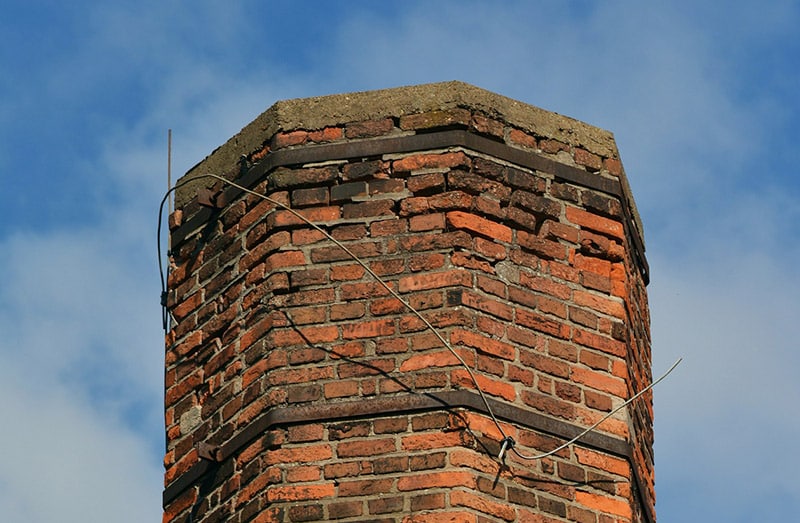
Understanding and Addressing Mortar Joint Cracking in Masonry Structures
Masonry structures have long been admired for their durability and timeless aesthetic appeal. Central to the stability and longevity of these structures is the mortar that holds the bricks or stones together. Mortar, while a crucial component of masonry, is not impervious to wear and tear. One common issue that plagues mortar is cracking, which can lead to serious structural problems if left unaddressed. This comprehensive article delves into the complexities of mortar joint cracking, its causes, consequences, and the meticulous repair process involved in tuckpointing.
Section 1: The Anatomy of Mortar
Before delving into the intricacies of mortar joint cracking, it’s essential to understand the composition of mortar and its role in masonry.
1.1 Mortar Composition
Mortar is a mixture of three primary ingredients: cementitious materials, aggregates, and water. The specific blend of these components varies depending on the desired strength, texture, and color of the mortar. Traditional mortars commonly employ a combination of Portland cement, sand, and water.
1.2 The Role of Mortar
Mortar serves a critical purpose in masonry structures. It binds bricks or stones together, providing structural integrity and stability. Additionally, mortar plays a role in load distribution, aiding in the even transfer of forces throughout the masonry unit.
Section 2: Understanding Mortar Joint Cracking
2.1 Causes of Mortar Joint Cracking
Mortar joint cracking is a common issue that can occur for various reasons. Understanding the underlying causes is crucial for effective prevention and repair:
2.1.1 Water Absorption: Mortar is porous, allowing it to absorb water over time. When water enters the mortar joints, it can expand during freezing temperatures, leading to cracks.
2.1.2 Thermal Expansion and Contraction: Masonry structures undergo temperature fluctuations. The expansion and contraction of materials due to these changes can stress the mortar, eventually causing cracks.
2.1.3 Settlement and Shifting: The natural settling of a building’s foundation or soil shifting can place uneven pressure on mortar joints, leading to cracks.
2.1.4 Age and Deterioration: Mortar, like all building materials, deteriorates with age. This can weaken its structural integrity, making it susceptible to cracking.
2.2 Consequences of Mortar Joint Cracking
Ignoring mortar joint cracking can have serious consequences for masonry structures:
2.2.1 Structural Instability: Cracked mortar joints compromise the structural stability of a building, risking collapse in severe cases.
2.2.2 Water Infiltration: Cracks allow water to penetrate the masonry, leading to moisture-related problems like mold growth and decay of underlying materials.
2.2.3 Aesthetic Degradation: Cracked mortar joints detract from the visual appeal of masonry structures, diminishing their overall value and charm.
Section 3: Tuckpointing – The Solution to Mortar Joint Cracking
Tuckpointing is a meticulous process used to repair damaged mortar joints and restore the integrity and appearance of masonry structures. This section explores the steps involved in tuckpointing:
3.1 Inspection and Assessment
Before beginning the tuckpointing process, a thorough inspection is conducted to assess the extent of mortar joint damage. This evaluation helps determine whether repair or rebuilding is necessary.
3.2 Grinding and Brushing
To prepare the damaged mortar joints for repair, the old mortar is carefully ground out and brushed away. This step ensures a clean surface for the new mortar to adhere to.
3.3 Cleaning
Cleaning the masonry surface is crucial to remove any dust, debris, or contaminants that could hinder the bonding of the new mortar.
3.4 Mixing and Application
Fresh mortar is mixed according to the specific requirements of the project. Skilled technicians apply the mortar using specialized tools, ensuring precision and uniformity.
3.5 Tooling
Tooling is a critical step in tuckpointing, where the newly applied mortar is shaped and tooled to match the surrounding joints, seamlessly blending with the original masonry.
3.6 Curing
Proper curing is essential to achieve the desired strength and durability of the mortar. This involves maintaining the right moisture levels and protecting the repair site from drying too quickly.
Section 4: When Rebuilding is Necessary
In some cases, mortar joint cracking may be so extensive that repairing individual joints is insufficient. When this happens, the entire section of the chimney or masonry structure may need to be rebuilt. This section delves into the circumstances that warrant complete reconstruction:
4.1 Extensive Damage
When mortar joint cracking affects a significant portion of the structure, it can compromise its overall stability, making rebuilding the safest option.
4.2 Age and Deterioration
In older structures with severely deteriorated mortar, rebuilding ensures a fresh start with new materials, enhancing longevity.
4.3 Architectural Changes
Rebuilding provides an opportunity to make architectural changes, such as altering the design or increasing structural strength.
Conclusion
Mortar joint cracking is a common issue in masonry structures, but with proper understanding and timely intervention, its impact can be mitigated. Tuckpointing is a skilled craft that not only repairs damaged mortar joints but also preserves the structural integrity and visual appeal of these timeless structures. When necessary, complete rebuilding can ensure the continued safety and beauty of masonry buildings, allowing them to stand the test of time. By addressing mortar joint cracking with the appropriate techniques, we can uphold the legacy of masonry craftsmanship for generations to come.
